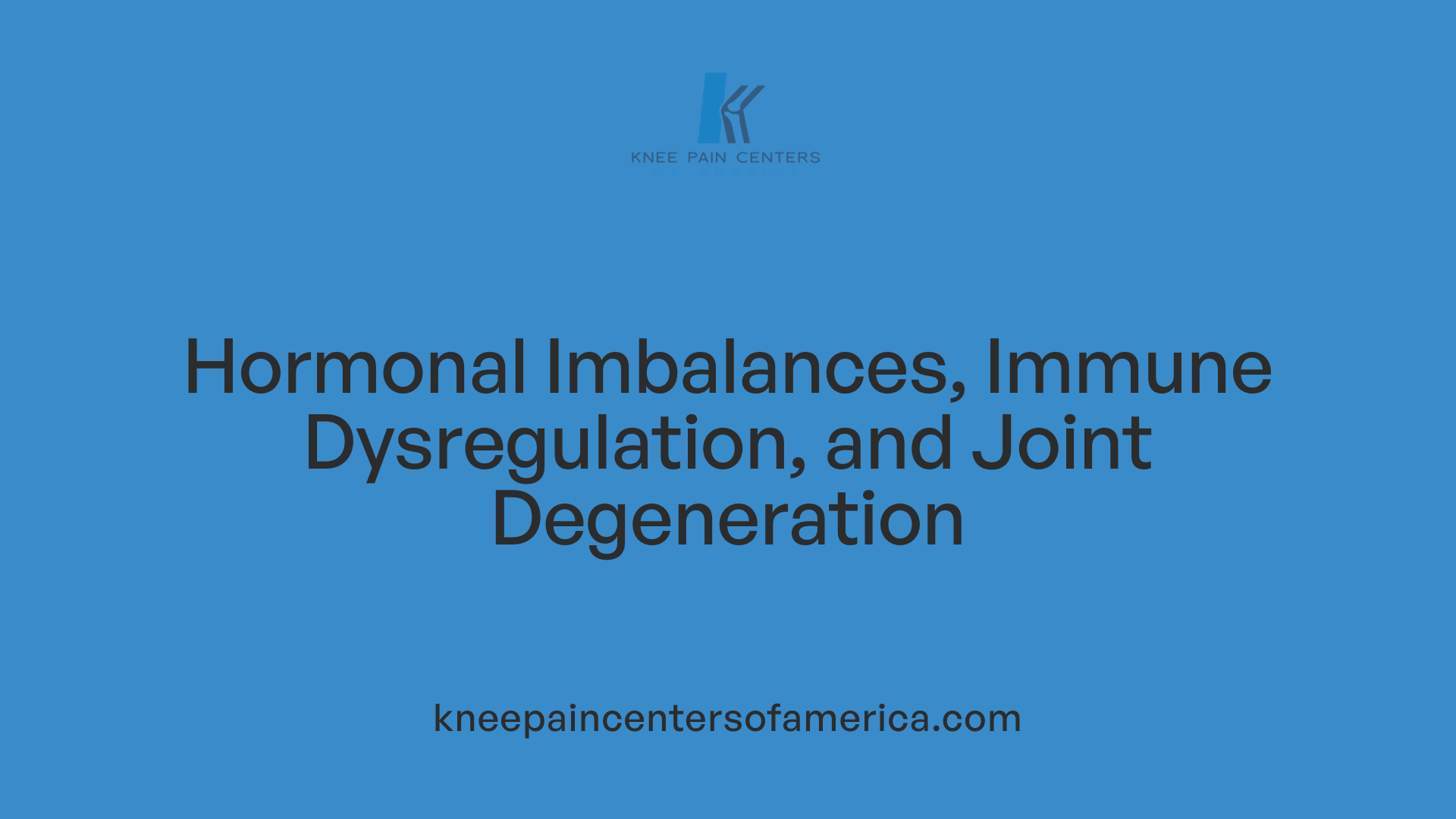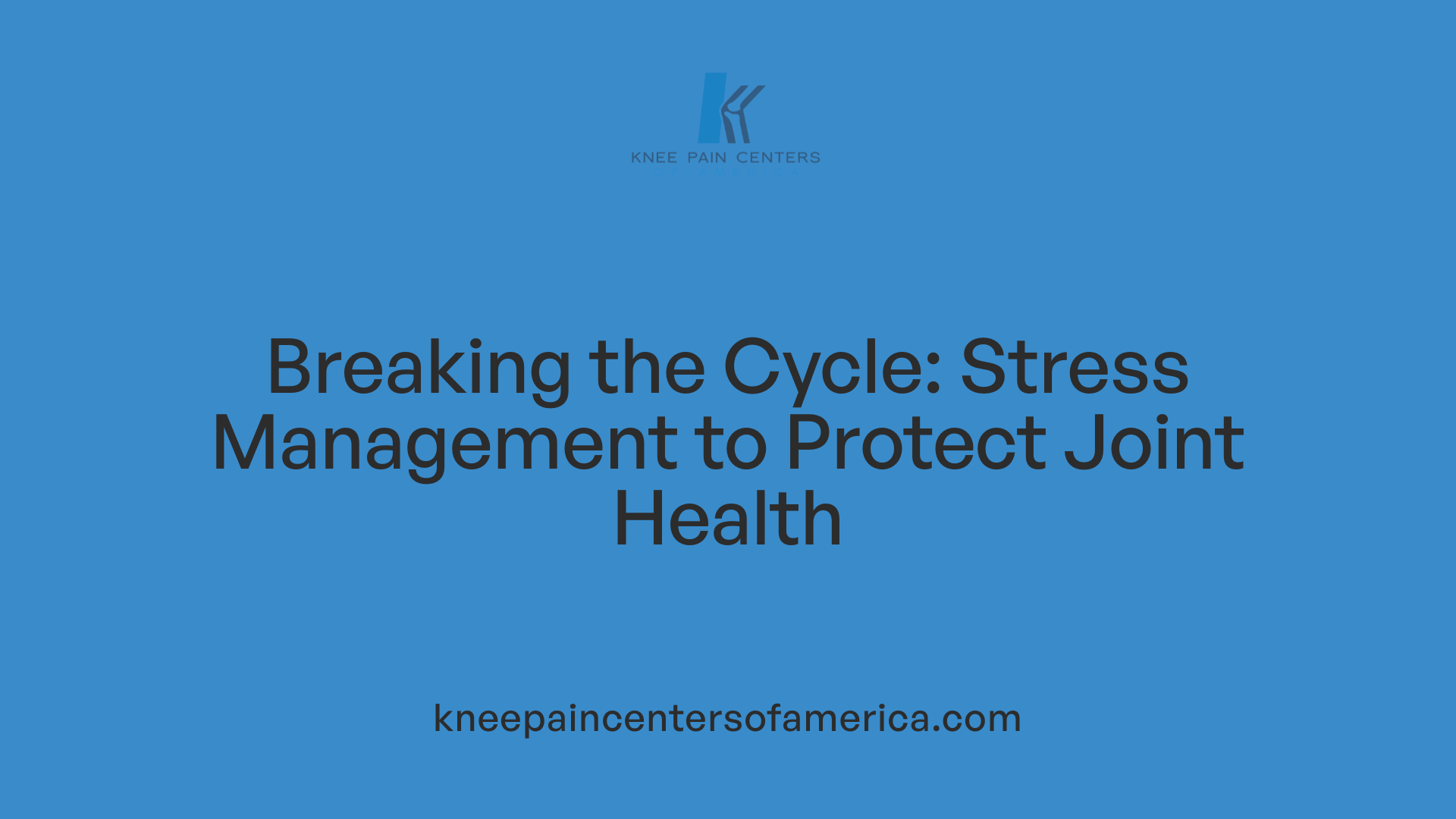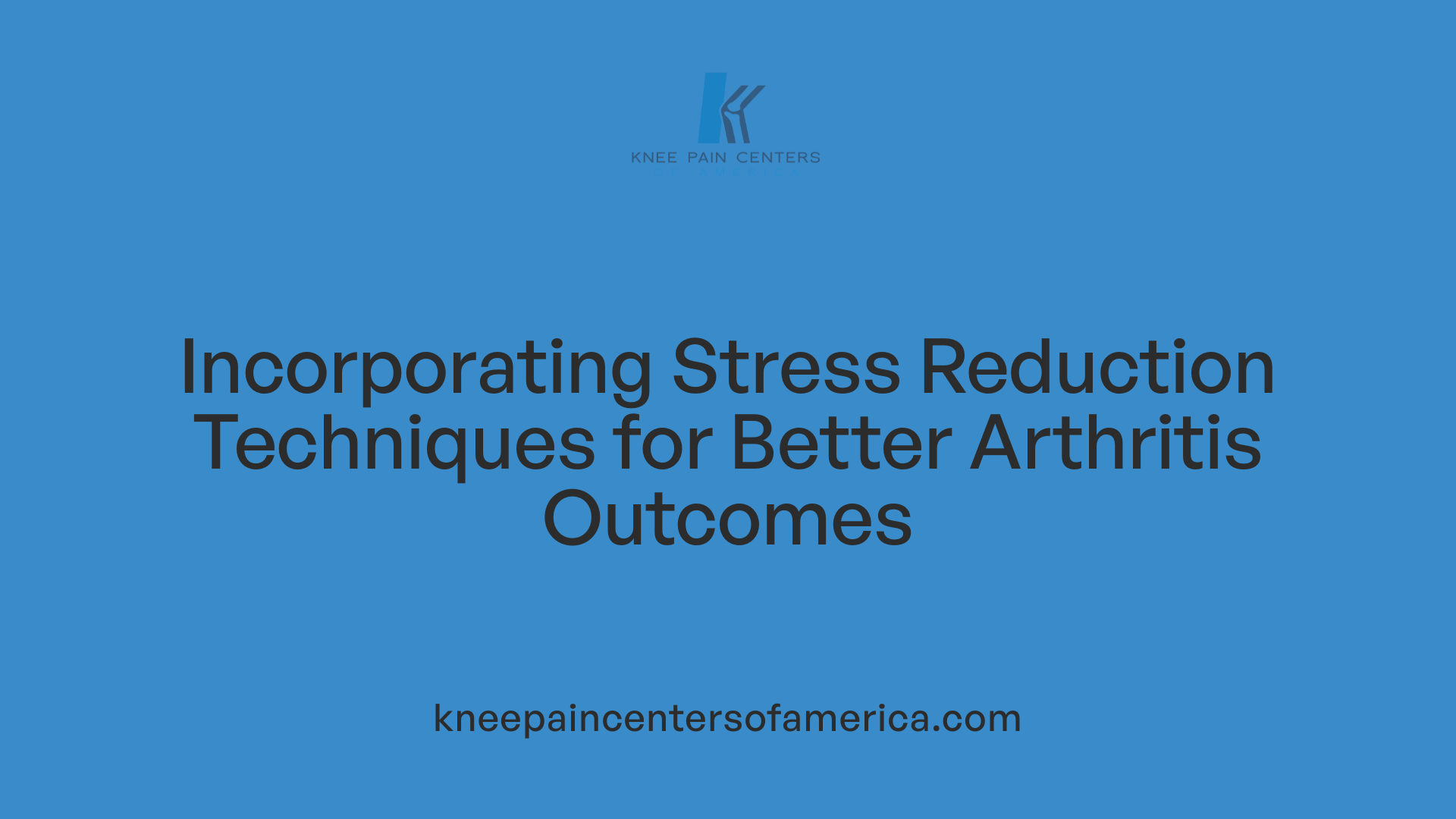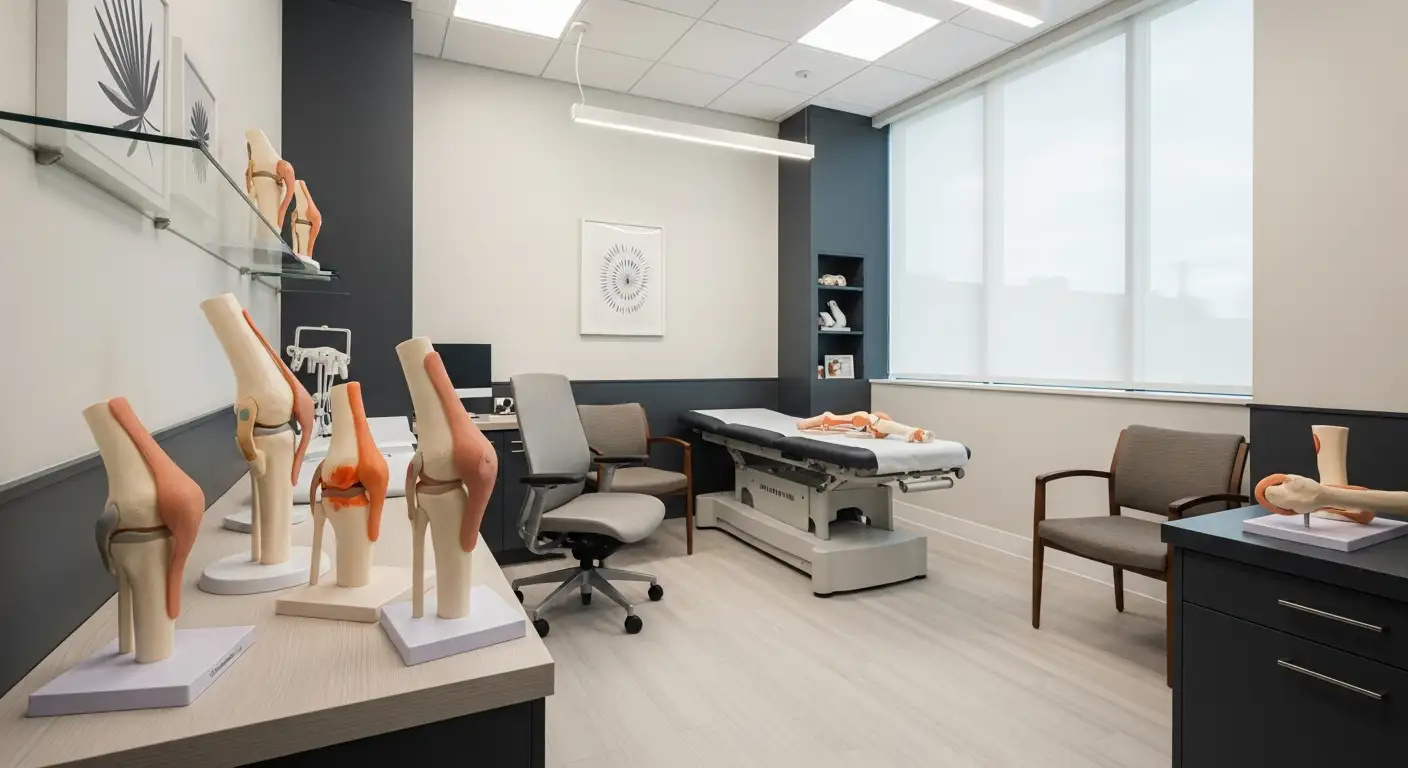Understanding the Impact of Chronic Stress on Osteoarthritis and Joint Pain
Chronic stress, a common and often overlooked factor, plays a significant role in the development and exacerbation of joint pain and osteoarthritis. Through complex physiological and behavioral pathways, stress influences inflammation, immune function, and pain perception, all of which affect joint health. This article explores how chronic stress contributes to joint deterioration and highlights current medical treatments and management strategies for knee pain and osteoarthritis, including the vital role of physical therapy, injections, and surgery.
The Biological Consequences of Chronic Stress on Joint Health

How does chronic stress impact inflammation and pain in joints?
Chronic stress initiates a physiological stress response characterized by the secretion of hormones such as cortisol, epinephrine, and norepinephrine. These hormones interact complexly with the body’s immune and musculoskeletal systems.
Normally, cortisol serves as an anti-inflammatory hormone that modulates inflammation and mobilizes glucose for energy. However, during prolonged stress exposure, cortisol regulation can become dysfunctional. This dysfunction results in enhanced systemic inflammation, which worsens joint degradation and amplifies pain in conditions like osteoarthritis and rheumatoid arthritis.
Furthermore, stress triggers muscle tension around the joints. This tension causes joint stiffness and can lead to misalignment, increasing the risk of injury and degenerative changes. The stiffness also contributes to heightened pain sensitivity, making joint discomfort feel more intense.
Beyond mechanical effects, stress-induced immune dysregulation amplifies the inflammatory response. Stress hormones activate immune pathways that increase the release of pro-inflammatory cytokines, exacerbating joint inflammation especially in autoimmune arthritis. This immune activation under stress can worsen conditions such as rheumatoid arthritis, psoriatic arthritis, and ankylosing spondylitis.
Finally, the combination of hormonal imbalance, immune activation, and muscle tension creates a vicious cycle that perpetuates arthritis pain. Stress magnifies pain perception through both physiological and psychological mechanisms, including increased muscle tension and sensitization of pain pathways.
Understanding these biological consequences emphasizes the importance of managing psychological stress to help reduce inflammation and improve joint function in arthritis patients.
Chronic Stress, Behavioral Factors, and Joint Degeneration

How does chronic stress influence behaviors that affect joint health?
Chronic stress often leads individuals to engage in unhealthy coping mechanisms that negatively impact joint health. Common behaviors include adopting a sedentary lifestyle, poor dietary habits, and smoking. These choices contribute to weight gain and muscle weakness, both of which add extra mechanical strain on joints. This increased load particularly affects weight-bearing joints such as the knees, accelerating cartilage wear and osteoarthritis progression.
This behavioral cascade is compounded by a reciprocal relationship between stress and arthritis symptoms. Persistent joint pain and fatigue caused by arthritis can elevate stress levels, which in turn heightens pain perception and may worsen inflammation. The ongoing stress can promote muscle tension and stiffness around the joints, further limiting mobility and increasing the risk for injury or degenerative changes.
Psychological factors play a crucial role in chronic pain associated with joint diseases. Stress-related maladaptive responses—such as rumination and feelings of helplessness—can amplify pain sensitivity and perpetuate chronic pain cycles. Addressing these psychological contributors is essential to managing pain effectively and improving quality of life for individuals with arthritis.
Understanding how chronic stress influences behaviors and physiological responses offers important insight into comprehensive arthritis care. Interventions that promote healthy lifestyle modifications, stress management techniques, and psychological support can help break this vicious cycle, alleviate symptoms, and slow joint degeneration.
Medical Treatments for Knee Pain and Osteoarthritis: Addressing Both Symptoms and Underlying Factors
What are the common medical treatments available for knee pain and osteoarthritis?
Management of knee pain and osteoarthritis (OA) typically begins with pharmacologic therapies to relieve pain and inflammation. Common medications include acetaminophen, nonsteroidal anti-inflammatory drugs (NSAIDs), corticosteroids, and topical NSAIDs. These help reduce symptoms but do not reverse cartilage loss.
Physical therapy plays a vital role by strengthening muscles around the knee joint, improving flexibility, and reducing mechanical stress on joint surfaces. Incorporating heat or cold therapy and supportive devices like braces or canes can also alleviate pain and improve function.
Furthermore, movement therapies such as yoga and gentle exercise contribute to better joint health and overall well-being. These noninvasive options form the foundation of conservative treatment before considering invasive procedures.
How do corticosteroid and hyaluronic acid injections help manage knee osteoarthritis?
Intra-articular injections are widely used to target knee OA symptoms. Corticosteroid injections provide short-term relief through their anti-inflammatory effects by reducing joint swelling and pain. However, frequent injections can potentially accelerate cartilage degradation.
Hyaluronic acid injections aim to restore joint lubrication and enhance cartilage metabolism. While some patients experience symptom improvement, long-term benefits remain uncertain based on current evidence.
Sometimes, combining corticosteroid and hyaluronic acid injections may prolong relief, but these therapies mainly address symptoms rather than modifying OA progression.
When is knee replacement surgery recommended for patients with osteoarthritis?
Surgical intervention, particularly knee replacement, is considered when conservative treatments fail to control pain and restore function. Indications include persistent pain lasting several months, confirmed structural joint damage through imaging, and significant impairment in daily life activities.
Knee replacement can be partial or total depending on the extent of joint involvement. The procedure is most suitable for patients with end-stage OA affecting one or multiple compartments of the knee.
Decision-making is personalized, weighing patient preferences, surgical risks, and anticipated improvements. Alternative surgical options like osteotomy or nerve treatments such as radiofrequency denervation may also be explored based on individual needs.
The Vital Role of Physical Therapy in Managing Knee Osteoarthritis and Counteracting Stress Effects
How does physical therapy help manage knee pain and osteoarthritis?
Physical therapy plays a crucial role in strengthening the muscles surrounding the knee, particularly the quadriceps and hip muscles. Stronger muscles help stabilize the knee joint, reducing abnormal mechanical stress on the joint surfaces that can accelerate osteoarthritis progression.
What benefits does physical therapy provide?
Physical therapy improves joint flexibility and overall function by using tailored exercise programs and manual therapy techniques. These approaches help decrease pain, enhance mobility, and improve patients' day-to-day abilities.
Why is early physical therapy intervention important?
Starting physical therapy early can slow down osteoarthritis progression and potentially delay or avoid the need for surgical treatments. Early strengthening and movement promote joint remodeling and pain relief.
How are patients educated in physical therapy?
Therapists provide guidance on exercise routines and weight management, which are vital to minimizing joint load and improving long-term joint health.
What adjunct modalities are used?
To complement exercise, physical therapy often incorporates modalities such as ultrasound and taping techniques that help relieve pain and reduce inflammation.
How does physical therapy address stress-related muscle tension?
Stress can cause muscles around the joint to tense, contributing to stiffness and increased pain. Physical therapy includes relaxation techniques and muscle stretching exercises to reduce this tension and its negative impact on joint function.
Physical therapy combines musculoskeletal strengthening, flexibility enhancement, pain relief strategies, and stress coping methods. This multifaceted approach is essential for managing knee osteoarthritis while counteracting the detrimental effects of chronic stress.
Integrating Stress Management Into Comprehensive Arthritis Care

How can managing stress improve outcomes for arthritis patients?
Psychological stress directly impacts immune and inflammatory responses, often intensifying arthritis symptoms. Chronic stress triggers the release of hormones like cortisol and adrenaline, which can increase muscle tension and provoke inflammatory pathways that worsen joint pain and damage.
Stress management techniques like yoga, meditation, and cognitive-behavioral therapy
Incorporating methods such as yoga, meditation, deep breathing, and cognitive-behavioral therapy helps modulate the body's stress response. These techniques reduce excessive inflammation and muscle stiffness, easing pain and preventing further joint deterioration.
Benefits of relaxation methods on pain and mood
Relaxation approaches encourage the release of endorphins—natural mood elevators—which diminish depression and anxiety often associated with arthritis. This dual effect not only relieves pain but also improves emotional wellbeing, helping patients cope better with their condition.
Multidisciplinary and holistic approaches to arthritis care
Holistic care models, like those offered at specialized clinics, combine medical treatments with stress management strategies. This multidisciplinary approach addresses both the physical and psychological challenges of arthritis, offering comprehensive symptom relief and improving patient quality of life.
Reducing anxiety to improve pain outcomes and quality of life
Since anxiety affects up to one-third of individuals with arthritis and can amplify pain perception, actively reducing anxiety through stress management ultimately leads to better pain control and enhances daily functioning.
Bridging the Gap Between Stress and Joint Health for Better Outcomes
Chronic stress significantly contributes to the development and worsening of joint pain and osteoarthritis through complex biological and behavioral pathways. Understanding this relationship highlights the need for comprehensive management strategies that address both physical symptoms and psychological well-being. Combining medical treatments—ranging from pharmacologic therapies to surgery—with physical and stress management therapies can improve patient outcomes. Holistic care models that integrate these approaches offer the greatest hope for reducing pain, slowing disease progression, and enhancing quality of life for those living with osteoarthritis and related joint conditions.
References
- The Roles of Mechanical Stresses in the Pathogenesis ...
- Can Stress Cause Arthritis and Make It Worse?
- The hidden impact of stress on your joints
- Chronic Stress, Cortisol Dysfunction, and Pain
- Chronic Stress and Arthritis: A Scoping Review
- How Stress Affects Arthritis
- Call Your Doctor to Discuss How Stress Affects Arthritis
- Indication Criteria for Total Knee Arthroplasty in Patients ...





